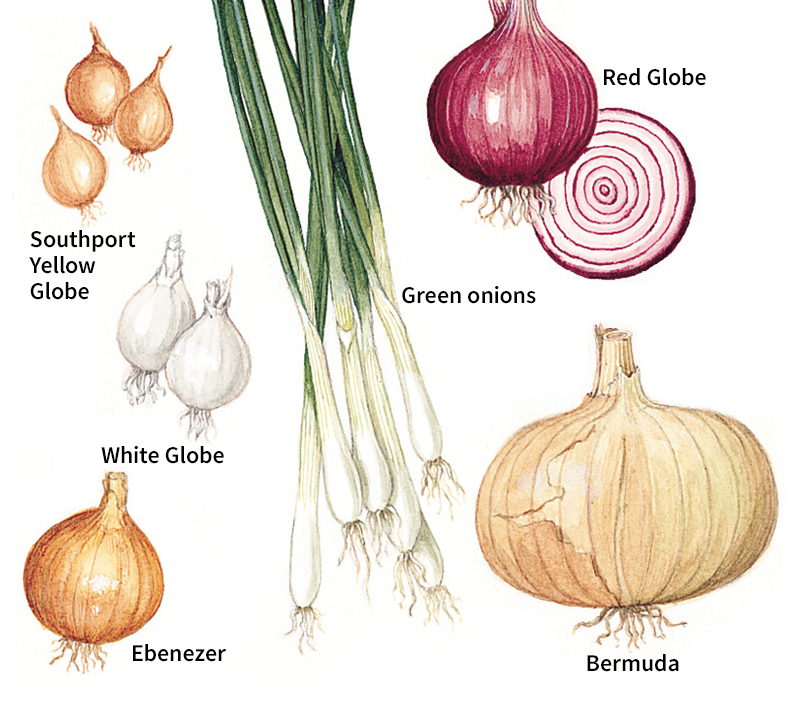Onion is a vegetable that has a strong odor and flavor. Onions rank as one of the world’s most popular foods. They are used chiefly as a seasoning and are eaten raw, cooked, dehydrated, and pickled. When cut, raw onions give off a vapor that causes people’s eyes to water.

The onion plant.
Most onion plants are biennials (plants that require two years to complete their life cycle). When fully grown, they consist of leaves, a bulb, and roots. The long, slender leaves are hollow cylinders that grow upright. They thicken at the base to form a bulb, the part of the plant that people eat most frequently. Onion bulbs grow partially aboveground. They tend to be globe-shaped, but some are wide and flat. Others are slender and upright. A thin papery covering made up of dried outer leaves encloses the bulb.
Onion bulbs may be red, white, or yellow. A cluster of short root fibers grows from the bottom of the bulb. During its second year of growth, an onion plant produces rounded clusters of small, greenish-white, seed-bearing flowers at the tips of its stalks. Most onions are harvested during the first year and thus do not flower.
Onions are classified as short-day onions or long-day onions, depending on the amount of daylight needed to begin bulb formation. Short-day onions require 10 to 11 hours of daylight and grow best in the southern United States. Long-day onions need 14 to 15 hours and grow best in the northern part of the country. Varieties of short-day onions include Red Creole, Texas Grano 1015Y, White Grano, Yellow Bermuda, and Yellow Granex. Long-day varieties include Candy, Southport Yellow Globe, Super Star, Vaquero, Walla Walla, and Yellow Sweet Spanish. To form a bulb, all onion plants require an average temperature greater than 60 °F (16 °C).
Cultivation.
Onion growers plant onion sets (small bulbs), seeds, or seedlings. Seedlings are grown in a greenhouse or in an area that has a warm climate during winter. Seeds are planted at a depth of about 1/2 inch (1.3 centimeters). Sets are pressed into the ground but left uncovered. Onions require rich soil. They also need plenty of water, especially when they are young. When the bulb is ready to be harvested, the plant’s leaves become limp and fall over. To avoid decay, growers dry and store harvested bulbs in a cool place.
Onions differ in the strength of their flavor. People use such strong-tasting onions as the Southport White Globe in soups and stews. Mild onions, including the Yellow Bermuda and Yellow Granex, are often eaten raw in salads or on sandwiches. Onions harvested when their bulbs are immature are called green onions or salad onions. Green onions are sold with leaves attached.
Onions probably first grew in central or southwestern Asia. Today, the leading onion-growing countries include China, India, and the United States. In the United States, leading onion-growing states include California, Oregon, and Washington.
